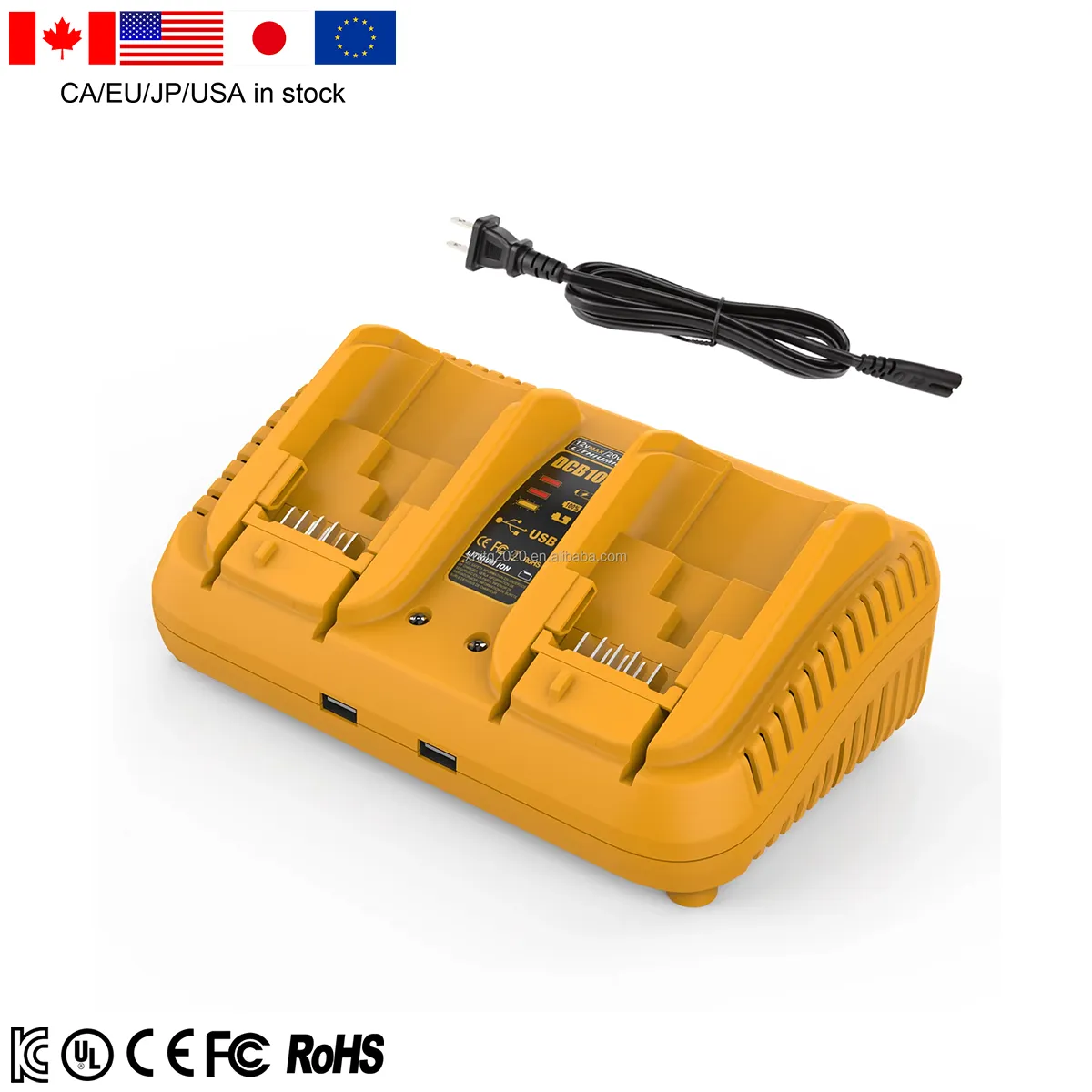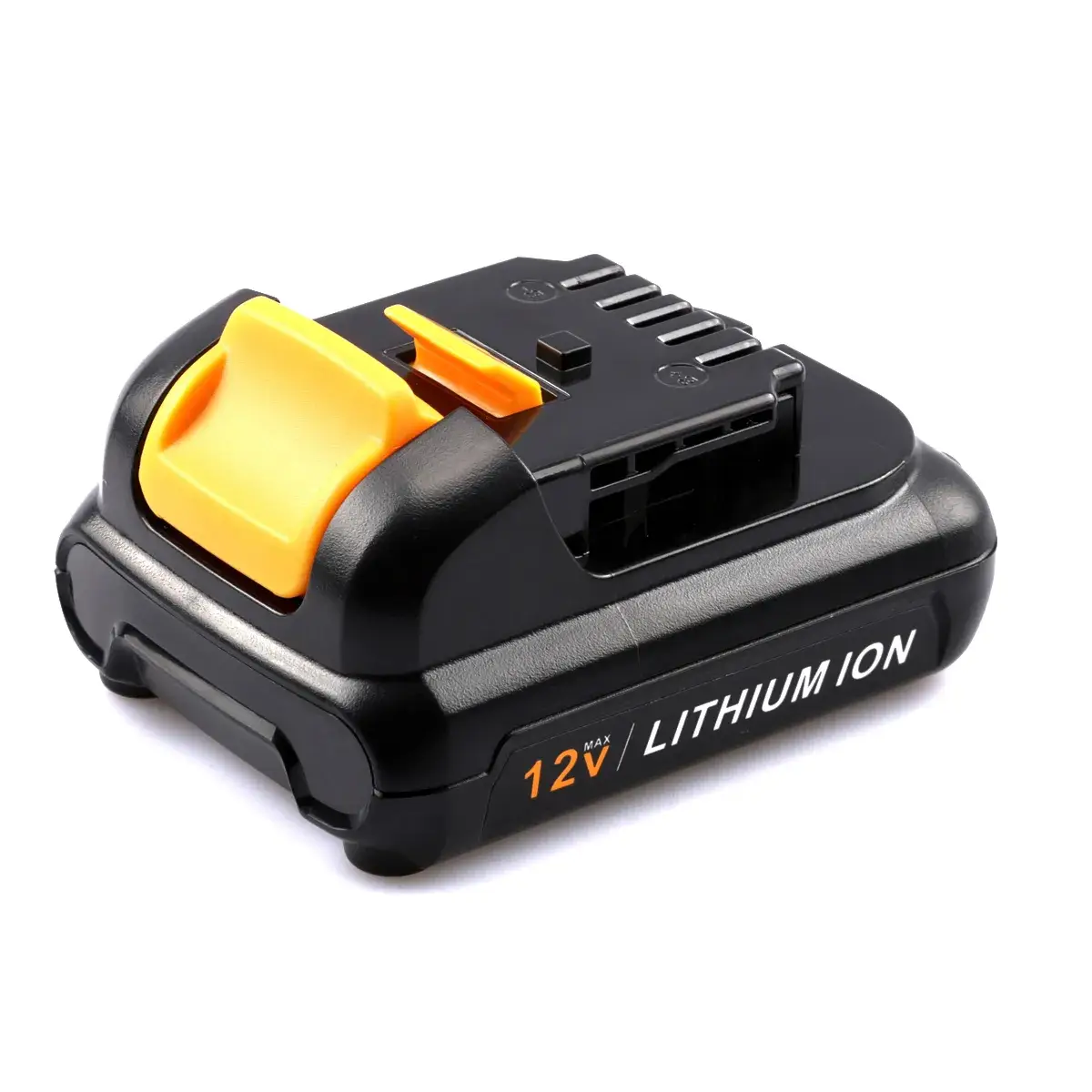How to Maintain Your DeWalt 12 V Battery in Cold Weather
DeWalt 12V Li‑ion packs lose capacity and may lock out below 0°C. Follow these steps—understanding cold‑weather effects, pre‑use warming, safe charging, insulated storage, in‑field tactics, and post‑use recovery—to preserve runtime and avoid permanent damage.

Why Cold Hurts Li‑Ion Batteries
| Temperature | Usable Capacity | BMS Behavior |
| 0 °C | ~80 % | Normal discharge |
| –10 °C | ~45 % | Discharge inhibited |
| –20 °C | < 20% | Charge/discharge blocked |
Below freezing, electrode reactions slow, internal resistance spikes, and the BMS prevents operation to avoid lithium plating or over‑discharge.
Pre‑Use Warm‑Up Techniques
In freezing temperatures, lithium‑ion chemistry slows and internal resistance spikes, so your first step is to warm DeWalt 12V packs indoors at 50–86 °F for at least thirty minutes before you charge or use them. Never attempt to warm a cold battery by leaving it on the charger—the cells need ambient heat to regain their optimal operating range—so bring them into your heated workspace and let them stabilize to at least 40 °F. While working in the cold, rotate between two or more batteries: alternate a warm “standby” pack with a working pack so no single battery endures prolonged sub‑freezing discharge, which risks tripping the BMS’s over‑discharge protection and can permanently reduce capacity. Avoid letting voltage fall below roughly 30 percent; pause work and swap or recharge once you hit that threshold. After finishing your shift, always return packs indoors, allow them to warm fully before charging, and—if you won’t use them for more than a few days—store each at about 40–60 percent state of charge in a dry spot above freezing. By pre‑warming, rotating, avoiding deep discharge, and storing at mid‑charge, you’ll preserve cycle life, maintain reliable runtime, and keep your DeWalt 12 V batteries healthy throughout the cold season.
- Indoor Conditioning (30–60 min): Bring packs inside to ≥ 10°C.
- Body Heat Pocket: Tuck packs in an inside jacket pocket (~37°C).
- Heated Toolbox (10–15 min): Place in a warm box at ~30°C before heading out.
Warming to at least 0°C restores capacity and lets the BMS re‑enable charge/discharge.

Replacment for DEWALT 12/20V MAX Battery Charger Dual Charging Station DCB102
Cold‑Safe Charging Practices
To protect your DeWalt 12V pack during cold‑weather charging, always bring the battery indoors and let it rest at room temperature (50–86 °F) for at least 30 minutes before connecting it to the charger—never rely on the charger itself to warm a cold battery. Use only the manufacturer’s charger in a well‑ventilated, temperature‑controlled space, and avoid placing the charger or pack near drafty windows, doors, or uninsulated walls. If your charger supports a low‑temperature cutoff, ensure that feature is enabled so it won’t begin charging until the pack’s internal sensors report a safe operating range (usually above 32°F). For faster warm‑up, nest the battery in an insulated pouch or wrap it loosely in a dry cloth, but never apply direct heat or flames. Once charging begins, monitor the pack’s temperature—if it feels unusually cold after an hour, pause the cycle and allow more warm‑up time. After charging, let the pack sit for at least 15 minutes indoors before use to let cell temperatures equalize. By pre‑warming, using the proper charger settings, and avoiding drafty or freezing locations, you’ll maintain full capacity, prevent BMS errors, and extend your battery’s service life through winter.
1. Never charge below 0°C. Wait until pack is at least 10–15°C.
2. Use standard‑rate mode (0.5 C). Slow currents reduce stress on cold cells.
3. Monitor temperature: If the charger or pack stays in error, warm further before retrying.
Insulated Storage & Transit
When moving or storing DeWalt 12V packs in cold environments, keep them inside an insulated container or thermal pouch—such as a neoprene sleeve or foil‑lined bag—to buffer against rapid temperature drops. Place silica‑gel packets inside the pouch to absorb any moisture and prevent condensation when you bring the batteries indoors. During transit, stow the pouch close to your body or inside an insulated compartment of your toolbox so body heat or ambient warmth minimizes exposure to sub‑freezing air. Avoid leaving packs in exterior vehicle compartments or on cold floors; even short periods below 32°F can stress cells and trigger BMS cut‑outs. When you arrive on site, remove batteries from the pouch only moments before use, then allow them a few minutes to acclimate to the outdoor temperature before inserting them into your tool. By combining insulation, moisture control, and strategic placement, you’ll preserve capacity, prevent cold‑induced faults, and ensure reliable starts in any winter worksite.
- State‑of‑Charge: Store at 30 %–50 % SOC to minimize stress.
- Reflective Wraps or Padded Cases: Keep packs insulated in cold vehicles or job boxes.
- Condensation Avoidance: After exposure, acclimate to ≥ 10 °C before reinserting into tool or charger.
In‑Field Operation Tactics
When working on-site, keep batteries close to your body or in an insulated pouch until the moment you need them, then let each pack acclimate to ambient conditions for a few minutes before insertion to avoid sudden temperature shock. Carry at least two fully charged spares so you can swap out a warm pack as soon as one begins to bog down under heavy load, preventing continuous high‑current draw and heat buildup. Tuck packs away from direct sunlight, engine exhaust, and wet surfaces—store them off the ground in a dedicated compartment or tool belt pocket to avoid dirt, moisture, or conductive debris. Monitor battery temperature during use by briefly touching the housing—if it feels hot to the wrist, rotate to a cool spare and allow the pack to rest. Between tasks, wipe terminals with a dry cloth or compressed air to clear dust, and if you’ll be idle for more than ten minutes, remove the battery from the tool entirely to prevent parasitic drain and accidental engagement. By rotating packs, protecting them from the elements, and giving each one brief cooldown and inspection breaks, you’ll maintain consistent power delivery and maximize runtime—even in the harshest field conditions.
- Pack Rotation: Alternate between warm and cold packs to keep at least one functional.
- Duty Cycling: Use 5–10 minute work intervals, then place packs back into jacket or heated box.
- Voltage Monitoring: Swap packs when voltage sag exceeds 1 V under load to maintain power.

Post‑Use Recovery & Maintenance
After your cold‑weather shift, return all DeWalt 12V packs indoors immediately and let them rest at room temperature (50–86 °F) for at least thirty minutes before handling. While they warm, gently wipe the terminals with a dry, lint‑free cloth to remove any moisture or debris picked up outside. Once the packs reach at least 40°F, perform a slow “topping” charge—plug them into the official charger and allow a gradual recharge to 80 percent rather than a full rapid cycle, which reduces stress on still‑cool cells. After charging completes, let the batteries sit for another fifteen minutes indoors so temperature and voltage fully stabilize. Inspect each pack for signs of condensation, cracks, or swelling; dry off any visible moisture before storing. If you won’t use a pack for more than a day, discharge it back to about 40–60 percent, then stow it upright in a dry, insulated case with silica‑gel packs. This post‑use routine ensures that cold‑exposed cells recover healthily, minimizing capacity loss and preventing BMS faults on your next job.
- Gradual Cool‑Down: Let packs return indoors to room temperature (20 °C–25 °C).
- Periodic Conditioning: Every 2–3 months, perform a full ambient charge/discharge cycle to rebalance cells.
- Visual Inspection: Look for cracks, swelling, moisture ingress; clean terminals with isopropyl alcohol and dry thoroughly.
Quick FAQ
Can I charge a DeWalt 12V pack below freezing?
No—charging under 0°C risks irreversible lithium plating. Always warm the pack first.
How long to warm up before use?
At least 30 minutes indoors or 10 minutes in a heated case; pocket warming helps on the go.
Will repeated cold use damage the pack?
If never warmed, yes—cold stress and BMS lock‑outs accelerate capacity fade. Proper warming prevents harm.
By mastering these cold‑weather best practices—warm‑up, safe charging, insulation, rotation, and recovery—you’ll keep your DeWalt 12V batteries healthy and your tools running reliably, no matter how low the temperature drops.
::contentReference[oaicite:0]{index=0}